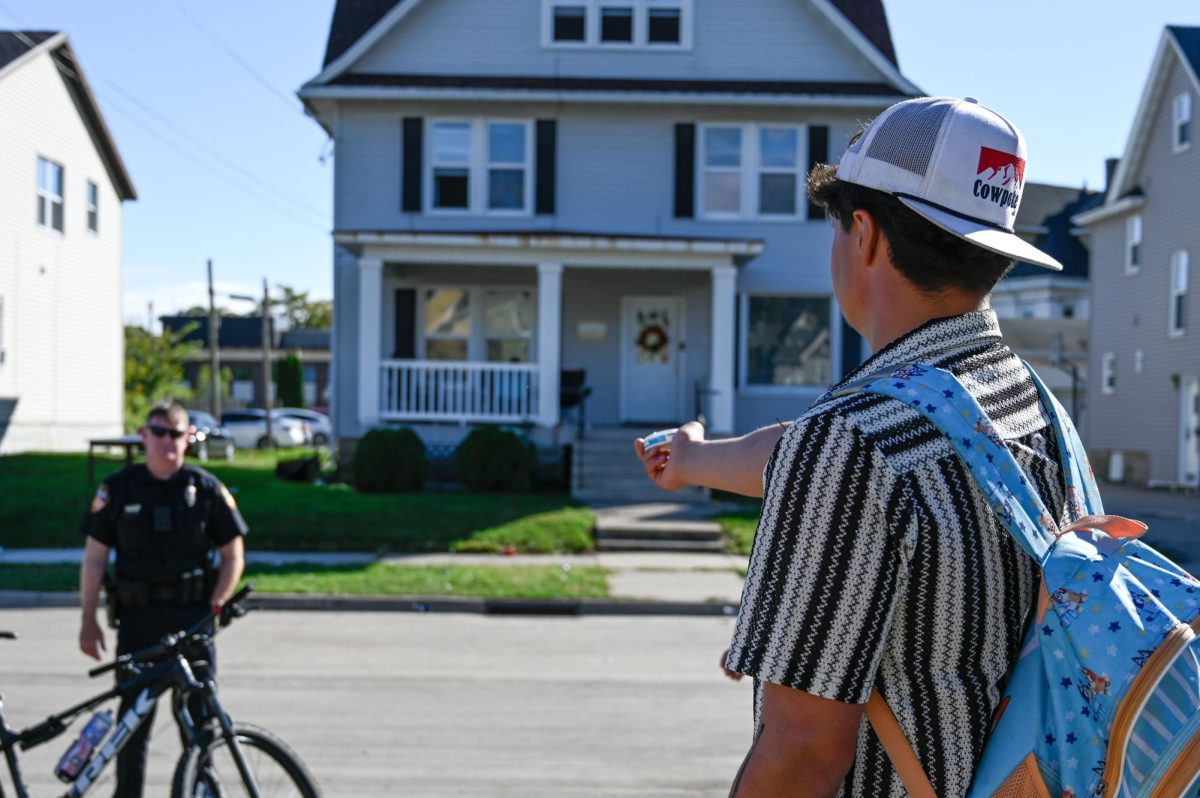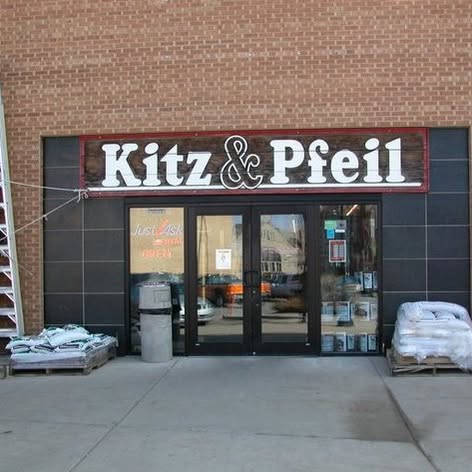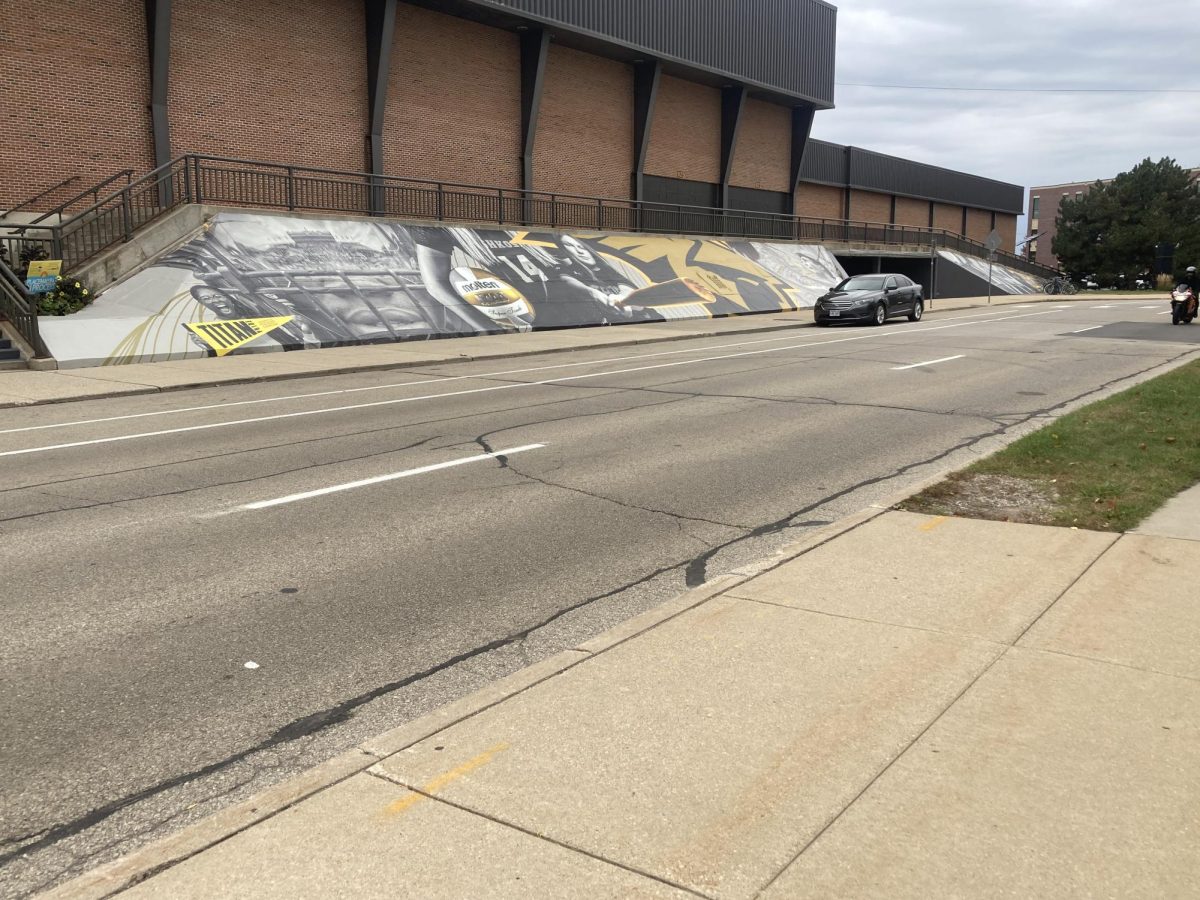Carefully prying open a can of ink with a palette knife, designer Kevin Rau removes a small glob of blue rubber-based ink and dabs it onto a square of cardstock. He then meticulously weighs it on an antiquated triple beam balance, repeating with yellow, then white, before scraping, swirling and flipping the gelatinous mass onto a translucent mixing board. Although he only has a dozen or so cans, Rau can create nearly any color imaginable. By combining his inks in specific ratios, he has access to the thousands of hues that line his Pantone color swatch book. “This one’s a little too St. Patty’s Day,” Rau says, pointing to the result of a previous mixture. “I’m thinking I need more of a Winnebago green. That’s going to give me some better contrast.” It’s hard not to take graphic design for granted. Design principles are applied to signs, logos, buildings and packaging of every sort. It’s the reason newspapers, books, magazines and websites are organized and displayed in a particular fashion. Its presence in the world is undeniable, yet somehow graphic design evades simple description. Through an understanding of its history and a knowledge of its principles, Rau is able to effectively present information in a way that appeals to the human senses. “For me, design is a way to bring order to chaos and to express the content of any communication with clarity and visual interest,” Rau said. “I perceive design in my life by recognizing it in its many variations, from print to product, furniture to architecture. We are surrounded by design– some of it great, some not so much.” In high school, Rau earned a nickname after he submitted a project for his electronics class in which he had to make a circuited light box that responded to a touch pad. “I had made a real project out of it,” Rau said. “I put this felt covering on it and the touchpad was a penny. The electronics professor was friends with my graphics professor so they started calling me ‘The Craftsman.’ John Rieben, former design professor to Rau and now his friend, said that Rau is very practical in his design. “He begins by understanding the problem and then designs a solution to that particular problem,” Rieben said. “He does not confuse his solution with tricks and flimflam.” Rieben said that most people do not look at design in a critical way. “We teach, sell, entertain, convince and explain through visual communication,” Rieben said. “Everything we encounter has some design element in it. Even if you eat a McDonald’s half pounder, someone created the arches, and that is not totally invisible.” Billboards are an example that Rau frequently uses to illustrate the importance of good design. “Here they are, these behemoths by the highway, and they’re often poorly designed compositionally and typographically,” Rau said. “It’s as if billboards themselves aren’t enough of an eyesore, they have to add insult to injury by designing them badly.” His design studio, aptly named Rauhaus [a nod to famous design school, Bauhaus] is nestled in the back corner of one of the city’s most historic buildings, The First National Bank of Oshkosh. The bank is perhaps the most distinguished structure on Main Street. Its pale limestone finish reflects the bright sun, effectively highlighting the decorative relief sculptures that define its first two floors. Three large, beveled arches house windows that mark the bank’s exterior face, its entrance in their center. Although the buildings uniform tone hints at a smooth texture, its weathered stone is coarse and unforgiving. Inside, the bank is eerily quiet and dim. The sounds of coin-counting tellers and chattering patrons have been replaced with the faint echo of ambient noise leaking out of the few offices that circumscribe the bank lobby. Occasionally, Rau will place signage both outside this door and on the sidewalk out front, but for the most part, his work remains unadvertised. Due to the specificity of his work and Oshkosh’s relatively small market, most of Rau’s clients contact him first. However, because of the historical significance of the bank as well as its additional rented space, passersby sometimes wander into Rauhaus with inquiries. Once after a little girl had strayed from her mother in the lobby and into Rau’s studio, she asked “Is this a museum?” Stepping inside Rau’s full studio, it’s easy to see how the girl was mistaken. The smell of crisp paper matches the library-like serenity of the quiet building. Its white walls and high ceiling do well to reflect the natural light emanating from the tall windows that line much of the room. Several framed posters celebrating design hang over desks, shelves and counters, none of which go unutilized. The mechanical presses distributed around his open concept workspace take up a good portion of the room’s perimeter. Rau rents this space in the bank primarily to accommodate this collection of cumbersome letterpress equipment. Rauhaus has three presses, each allowing for a different size of paper. Though they vary slightly in their appearance, all of the presses in his studio were manufactured by Chandler and Price, a company out of Cleveland that dominated the letterpress industry in the 1930s. Now a large part of his business, letterpress is an old-fashioned printing method in which movable type is inked and applied with great pressure onto paper. This transfers the ink and leaves a noticeable impression on the paper. Today he uses his platen press. When the machine is being fed, each full revolution produces a single print. Half of the motion inks the rollers, coating them with a sticky hiss. The remaining momentum is used to transfer the viscous roller ink to the plate and apply pressure to the print. Rau was commissioned by local entrepreneur Kris Larson to design and create a series of postcards commemorating Oshkosh. “[Letterpress printing] is something we have a need for,” Larson said. “I like the historical nature of it and it looks better than most things we do today. It’s the highest level of print reproduction as far as I’m concerned, at least for commercial use.” Larson has been a patron of the Rauhaus in the past, and continues to request and promote Rau’s work. “He is the very best there is, and not many people do what he does,” Larson said. Throughout December, Rau will display a series of letterpress prints in the Becket’s gallery. The prints depict several historic buildings in Oshkosh. The prints will link the city’s storied past to the historical nature of Rau’s printing methods. Rau was able to find a high quality reproduction of the 1876 Oshkosh City Directory, which depicted the original images printed with steel plate engravings. “I’m acting as a designer even though they are going to be presented as a kind of fine art,” Rau said. “It’s design. I’m taking existing typography, existing illustrations and combining them in a way that hadn’t been done before.” For much of Rau’s platen press work, he requires a polymer plate to be made, outsourcing it to a company that turns his electronic blueprint into a physical stamp that will be fitted onto his letterpress. Once the plate is in place and the rollers are inked, Rau measures the position of the clips that will hold each postcard. He uses scrap paper to determine if the design is correctly positioned with an adequate impression. Once everything is in place, Rau can finally begin printing. The press moves to the time of Rau’s black harness boot. He must be deliberate with his motions to ensure the uniformity of his prints. “This process isn’t about speed,” he says. “Never has been.” The rolling gears hum metallically and finish each revolution with a dull clank. The rhythmic mechanical melody is peculiarly pleasing and hypnotic; there is an odd beauty in the harmony to which the platen’s cast-iron components cohere. After watching the motions of the press, it is easy to see the appeal of its dated yet effective action. “When I’m working with the letterpress, I feel like I’m creating something more along the lines of a momento,” Rau said. “Anyone can create a piece of junk mail that you only look at once and toss.” As outdated as some of Rau’s methods may be, his work has a particular historic and artistic appeal that many in the city find worthy of preservation. “The Craftsman’s” appreciation for quality and fine detail separates his work from the scores of mass produced and often disposable products that have become all too common in the design world.
Categories:
Professor’s letterpress studio leaves imprint
December 2, 2015
0








